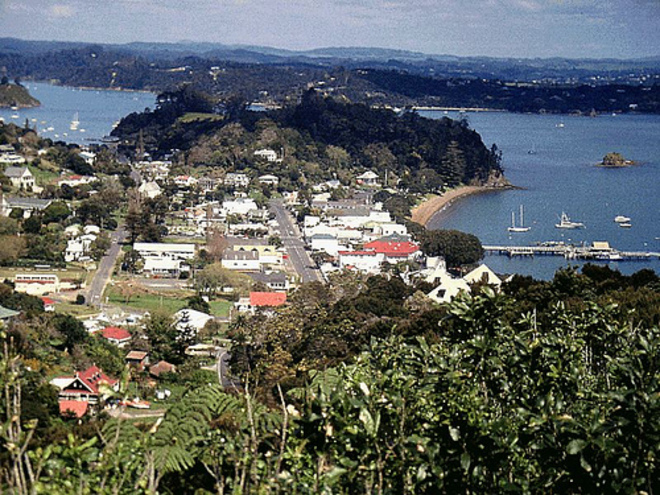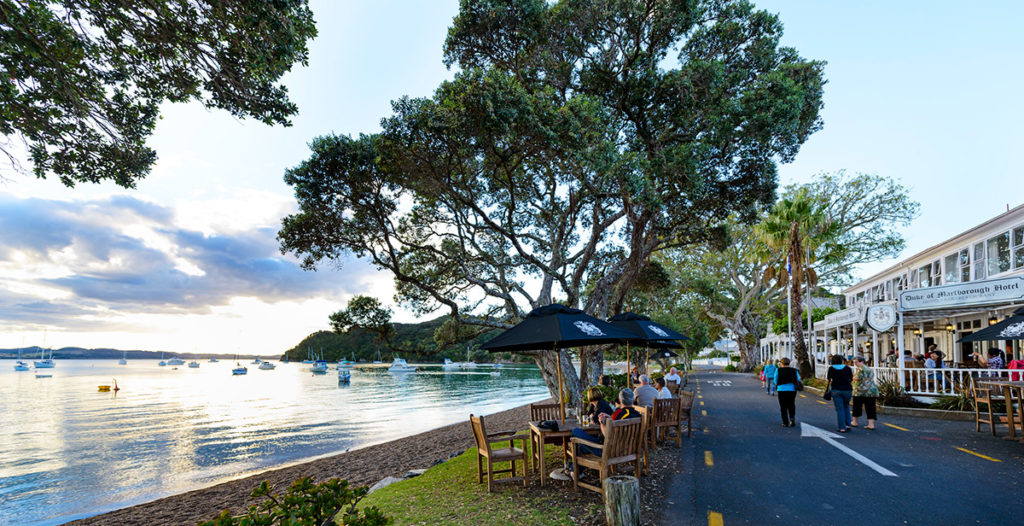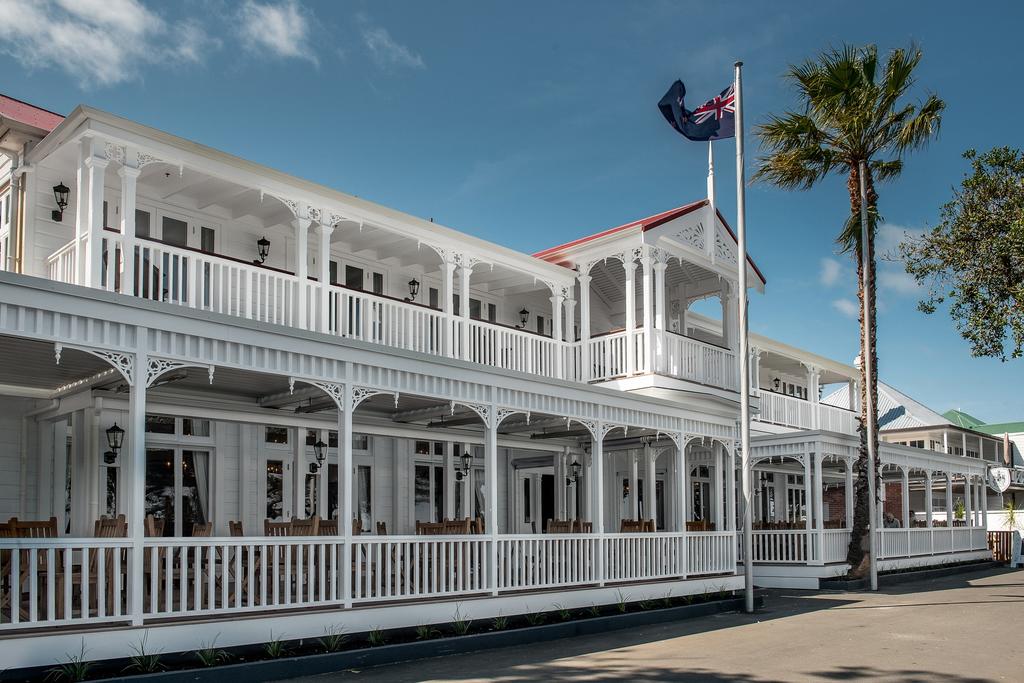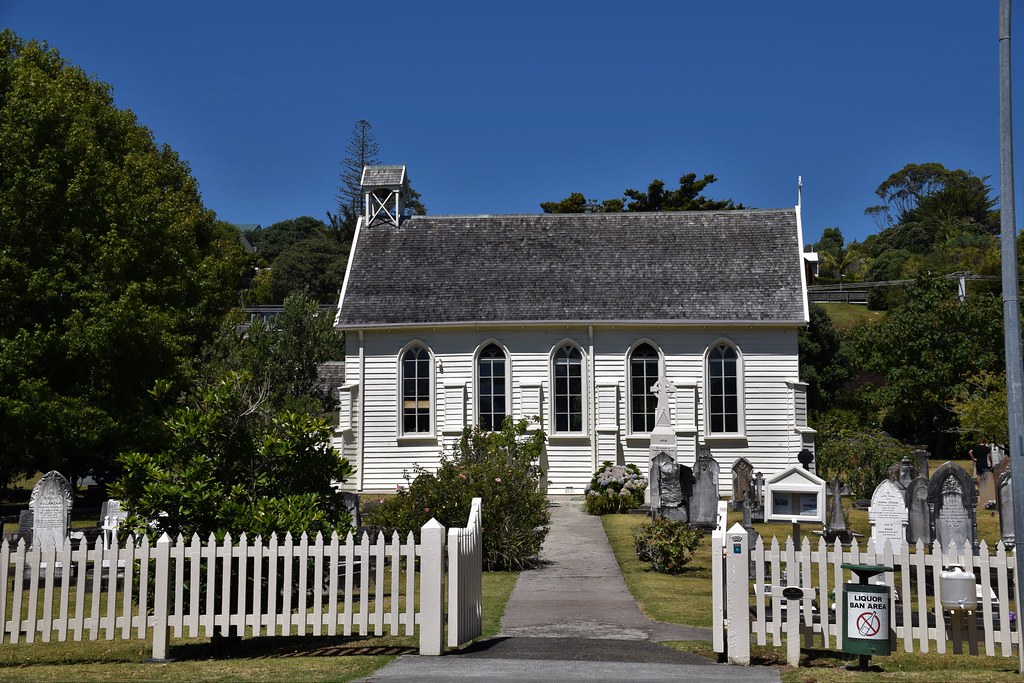Continuing my series of blogs discussing my favourite places in New Zealand, I take you to the Bay of Islands and another wonderful little town with charm and a super relaxing atmosphere.
RUSSELL
Russell was the first permanent European town and seaport in New Zealand. It is believed sealing and whaling ships were arriving there before 1800. It didn’t take long for the local Maoris to realize they could barter food and timber for alcohol and firearms. Within a short time, Russell was a bustling trading centre. Unfortunately, crime and prostitution also flourished and the wild town became known as ‘the Hell Hole of the Pacific’. At this time, it was known by the Maori name of Kororareka, in homage to the little blue penguin, but in 1840, Governor Hobson changed the name of the settlement to Russell in honour of Lord Russell, the then Secretary of State for the Colonies.

Russell is located in the Bay of Islands which is arguably the North Island’s top tourist destination and has been a favourite holiday spot for Kiwis for generations. The area consists of 144 islands dotted around the sparkling waters that have been internationally famous for big game fishing since it was promoted by American writer Zane Grey in the 1930s. The area was visited by Captain Cook in 1769 and he was the man who named this cluster of islands the Bay of Islands. It was also the first part of New Zealand to be settled by Europeans. Russell is unique in that the quickest way to get there is by the little car ferry at Opua. There is road access but that makes the journey from anywhere to Russell much longer.
I love Russell’s relaxed atmosphere and The Strand, the town’s picturesque main street, resembles a storybook town with the quaint white wooden buildings lining one side of the street and beautiful trees bordering the opposite side. It is a very peaceful place with a resident population of around 900 and despite a swollen population over holiday periods, the little town never seems crowded.

ICONIC HOTEL
I’ve been fortunate to have eaten in many of New Zealand’s historic hotels and I have to admit, I consider Russell’s wonderful Duke of Marlborough my favourite. This is partly due to the location facing the sea, and also because of the welcoming atmosphere and rich wooden interior decor. The adjective, ‘charming’ is often used to describe this popular hotel. On the 14th July 1840, the Colonial Treasury issued the hotel with a license to sell alcohol, making it the first licensed hotel in the country. In the town’s heyday, there were nine hotels operating. The first Duke of Marlborough was opened in 1827. The current building is the fourth on the site as the three previous hotels were all destroyed by fire. The ‘Duke’ as it is locally referred to, is easily recognized by most Kiwis. It is a unique treasure and is now a ‘must’ for those visiting the town.

Another iconic building in Russell is a few steps from the hotel. The Gables Restaurant used to be a ‘provider for the needs of the whaler’. It had a secret room on the first floor for hiding sailors who had jumped ship. Originally built in 1847, The Gables was built on a foundation of whale bones. Over the following century, the cute building was used as a shop, a bakery and a home for boys. It is now a popular restaurant run by a roster of international chefs.
OLDEST INDUSTRIAL BUILDING IN NZ
Pompallier House is another attractive historic building in Russell and was built as the headquarters of the French Marist Brothers. It takes its name from Bishop Pompallier who in 1841, approved the construction of a building to be used for printing bibles and is noted for printing the first ones in Maori. The building was made of sand, rock and timber as was common at the time back in France. It was also a cheaper than using just wood and remains a unique form of construction in Australasia. The debauchery taking place all around them must have been too much for the religious men because nine years after arriving in Russell, the Marist Brothers moved their operations to Auckland. It also made sense to move south because Auckland’s population was growing much faster than was the case in Russell.

From his new base in Auckland, Bishop Pompallier sold the printing press to the Waikato Maoris. The sturdy iron constructed machine known as a “Gaveaux Press” was put to good use when the Maori king used it to print a Maori language newspaper. During its working life, the press printed over 40,000 books and in the 1990s, the Maori queen returned the fascinating machine to Pompallier House. The Marist Brothers eventually sold the building into private ownership and over the following century it passed through a number of owners until the government purchased the dilapidated building in 1941. After the war, Pompallier House was slowly restored and is now on show in its original condition. It is the oldest industrial building in New Zealand as well as the oldest Catholic building in the country.
EARLY SETTLER GARDEN
The Pompallier House heritage garden was created by Jane Mair in 1879, two decades after the Marist Brothers had abandoned Russell. Jane planted her imported seeds in the style popular in her time. As I wandered past the colourful flower beds and beautiful old trees, I breathed in the soft scents that filled the air that was also alive with native birds chirping happily in the late afternoon sun. I was told the garden is a faithful copy of a Victorian one, with the unique mixture of plants growing side by side that was the style back at that time. The vegetable garden was also an important aspect of an early settler’s garden as this was a time before food stores were available so it was a matter of supplying your own produce. Time has mellowed these beautiful gardens and add to the attractive appearance of Pompallier House.
NEW ZEALAND’S OLDEST CHURCH
Built in 1840, Christ Church is considered the oldest church in the country. It was used for a variety of purposes. In its role as a public hall, Captain Hobson, the first Governor of New Zealand, performed the first official act on the shores of the colony as he read the Crown Proclamation declaring New Zealand a dependency of New South Wales. He drafted a treaty that would lay out the conditions of colonization. Within a week the first copies of the Treaty of Waitangi were signed across the bay. That same year, the church, while serving as a courthouse, hosted a sensational trial in which a local Maori was charged with the murder of a European. A group of Maoris tried to free the prisoner until an interpreter from the mission averted bloodshed.

On the 11th March 1845, there was a confrontation on the southern boundary of the churchyard between seamen from HMS Hazard and Maori chief, Hone Heke’s men. Two Royal Marines and four seamen, killed by the Maoris, are buried in the churchyard. The original headboard from their grave is inside the church. The church itself was hit by stray musket and cannon balls and the holes left in the walls are still there and are a drawcard for visitors to the town. As I wondered around the graveyard of this little church, I felt an almost spiritual presence. Others I have spoken to also said they found a deep peace while walking among the tombstones. It has a different feel from other old graveyards in New Zealand.
Another historic building in Russell that attracts attention is the Old Customhouse. This attractive building on The Strand opened for business in 1870 to process the cargoes carried by an increasing number of ships. It replaced a tent on the beach that had been used since 1840. In 1890, the Customhouse became the town’s police station and police operations continued from the same site until 2010 when the police moved into a bland new building with no interesting features and definitely not a building to hold any interest to future visitors to the town. The magnificent Moreton Bay fig tree that shades the Customhouse was planted in the 1870s and is another of the town’s many treasures.

The best way to get an indication of Russell’s superb location is to walk up Maiki Hill that rises at the side of the town. Also known as Flagstaff Hill, it had an important role to play in New Zealand’s early colonial history. The famous flagpole was cut down four times between 1844 and 1845 protesting the colonial government’s policies that Maori believed removed their rights. The Union Jack was a symbol of this loss of power and after the flagpole was cut down for the fourth time, the Maoris went to war with the British settlers in what has become known as the ‘Flagstaff War’. It was in fact, the first war between Maori and the white settlers. Driven by Hone Heke, the conflict raged for eleven months during 1845 and 1846. Today, the famous flagpole flies New Zealand’s original flag on twelve days of each year. Apart from the historic significance of the hill, the view from the top across the Bay of Islands is one of the finest sea vistas in the North Island.
Ceidrik Heward
Ceidrik Heward is an Amazon TOP SELLING AUTHOR and has lived and worked in 7 countries working as a TV cameraman, director and film tutor. For the past 17 years he has focused on writing and has been published in magazines and newspapers in Europe, USA, Asia and the Middle East.
His interests include photography, psychology and metaphysics. He loves to read and always has at least 3 books on the go. He has written 22 manuals/books and has just completed his 4th short novel. Ceidrik believes sharing information and stories is the best way to stimulate the imagination and enrich our lives.






















 Visit Today : 331
Visit Today : 331 Total Visit : 1078935
Total Visit : 1078935
That is a very interesting blog. I remember visiting Russell when I was. Young girl while on holiday and I loved it then.
Great story